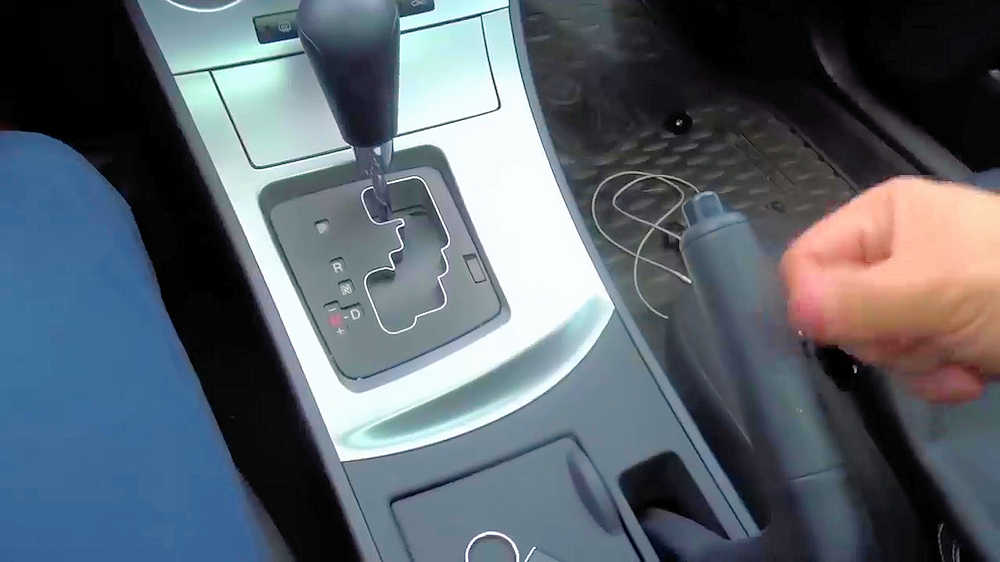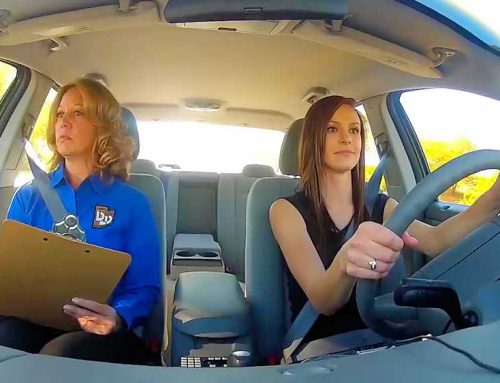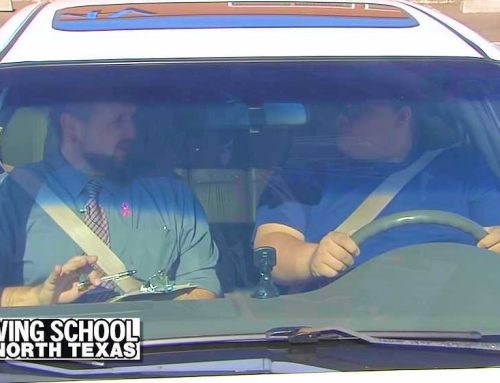Table of contents
- Key Takeaways
- Gather all necessary documents
- Check with local Department of Motor Vehicles or driving school for requirements
- Familiarize yourself with the course curriculum and expectations
- Review and study the driver’s manual
- Practice basic driving skills before the course begins
- Get a good night’s sleep and eat a healthy meal before each class
- Come prepared with a positive attitude and willingness to learn
- Frequently Asked Questions
- What is the minimum age requirement to enroll in a driver education course?
- Can I enroll in a driver education course if I have a learning disability?
- Are there any additional fees or costs associated with the driver education course?
- Can I use my own vehicle for the driving practice sessions during the course?
- Is there a specific dress code or uniform that needs to be followed during the driver education course?
- Conclusion
Are you getting ready to start a driver education course? Before you hit the road, it’s important to be prepared. In this article, we’ll give you some tips on how to get ready for your driver education course so that you can make the most of your learning experience.

First things first, gather all the necessary documents. Check with your local Department of Motor Vehicles or driving school to find out what documents are required for the course. Make sure you have everything in order before starting the class. Once you have your paperwork sorted, take some time to familiarize yourself with the course curriculum and expectations. This will help you know what to expect and prepare accordingly. Additionally, don’t forget to review and study the driver’s manual thoroughly as it contains important information about traffic laws and rules of the road. By doing these things, practicing basic driving skills before the course begins, and coming prepared with a positive attitude, you’ll be well on your way to becoming a confident and responsible driver.
Key Takeaways
- Proper nutrition and sleep are important for driver education.
- Approach the course with an open mind and eagerness to absorb knowledge.
- Stay motivated throughout the course.
- Always strive for improvement in your driving skills.
Gather all necessary documents
Before you dive into the exciting world of driver’s education, make sure to gather all your necessary documents! Gathering required paperwork is an essential first step in preparing for your driver education course. Start by collecting your identification documents such as your birth certificate or passport, social security card, and proof of residency. These documents will be needed when registering for the course and obtaining your learner’s permit. Additionally, organizing study materials like textbooks, practice tests, and any other resources recommended by the driving school will help you stay on track during the course.
Once you have gathered all the necessary documents and organized your study materials, it’s time to check with your local department of motor vehicles or driving school for specific requirements. They may have additional paperwork or prerequisites that need to be completed before starting the course. This could include things like medical forms or vision screenings. By checking with them ahead of time, you can ensure that you have everything in order before beginning your driver education journey.
With all your necessary paperwork gathered and study materials organized, you are now ready to take on the exciting challenge of a driver education course. Remember to keep these documents safe throughout the duration of the course as they may be required for various stages such as obtaining a learner’s permit or scheduling a driving test. Now that you’re fully prepared, let’s move on to exploring what requirements are needed from your local department of motor vehicles or driving school!
Check with local Department of Motor Vehicles or driving school for requirements

Make sure to contact your local DMV or driving school to find out about any specific requirements you need to fulfill. It is important to understand the local requirements for enrolling in a driver education course. Each state or region may have different regulations, so it’s crucial that you gather all the necessary information beforehand. Here are some key points to consider:
- Age restrictions: Some states may require you to be a certain age before enrolling in a driver education course.
- Permit prerequisites: You might need to obtain a learner’s permit before starting the course.
- Documentation needed: Make sure you have all the necessary documents, such as identification and proof of residency, ready when contacting your local DMV or driving school.
- Physical fitness requirements: Certain medical conditions or physical impairments might affect your eligibility for taking the course.
| BOOK YOUR DRIVING CLASS TODAY! |
| Driving School of North Texas |
By understanding these local requirements and ensuring that you meet them, you will be well-prepared for your driver education course. Once you have confirmed these details, it’s time to move on and familiarize yourself with the course curriculum and expectations without delay.
Familiarize yourself with the course curriculum and expectations
Get ready to dive into the exciting world of driving as you familiarize yourself with what this course has in store for you! Start by obtaining the necessary course materials, such as textbooks and study guides. These resources will provide you with essential information about road rules, traffic signs, and safe driving practices. Take some time to go through these materials and get a sense of what topics will be covered throughout the course.
As you delve into the curriculum, pay close attention to the learning objectives outlined by your instructor or provided in the course syllabus. Understanding these objectives will give you a clear idea of what you should expect to learn and achieve by the end of the driver education course. Make note of any specific skills or knowledge areas that require extra attention so that you can focus on them during your studies.
With an understanding of the course materials and learning objectives, it’s time to move on to reviewing and studying the driver’s manual. This comprehensive guide contains all the information you need to know about local traffic laws, regulations, and safe driving practices. By thoroughly reviewing this manual before starting your driver education course, you’ll have a solid foundation of knowledge that will help you succeed in both classroom discussions and practical driving exercises.
Now that you are familiar with what this course entails and have reviewed your driver’s manual, it’s time to take your preparation one step further…
Review and study the driver’s manual

Take a moment to familiarize yourself with the driver’s manual, as it contains valuable information that will enhance your understanding of local traffic laws and regulations, ultimately making you a safer and more knowledgeable driver on the road. Did you know that according to a study conducted by the National Highway Traffic Safety Administration, approximately 94% of car accidents are caused by human error? By reviewing the driver’s manual, you can learn about important topics such as road signs, speed limits, right-of-way rules, and parking regulations. This knowledge will help you navigate through different driving scenarios confidently.
To make the most out of your review, try using effective techniques such as highlighting key points or creating flashcards for important concepts. Additionally, many driver’s manuals offer practice quizzes at the end of each chapter. Take advantage of these quizzes to test your knowledge and identify any areas where you may need further review. By regularly reviewing and studying the driver’s manual prior to starting your course, you will be better prepared to absorb new information during class.
As you become more familiar with the driver’s manual and gain confidence in your understanding of local traffic laws, it is time to transition into practicing basic driving skills before the course begins.
Practice basic driving skills before the course begins
Before the course starts, make sure to spend time honing your basic driving skills for a smoother transition into the driver’s education program. Practice driving skills by finding a qualified driving instructor who can guide you through various techniques and maneuvers. This will help build your confidence behind the wheel and familiarize yourself with the fundamentals of driving.
To effectively practice driving skills, here are some key areas to focus on:
- Mastering steering control: Learn how to properly grip the steering wheel and smoothly turn it. Practice turning corners at different speeds and in different scenarios.
- Developing braking techniques: Understand how to brake gently, gradually, and quickly when necessary. Practice stopping at various distances and learn proper emergency braking techniques.
- Enhancing parking abilities: Practice parallel parking, perpendicular parking, and angle parking in different environments. Familiarize yourself with using mirrors and checking blind spots while maneuvering into tight spaces.
- Learning basic traffic rules: Gain knowledge about traffic signs, signals, right-of-way rules, and speed limits. Apply this knowledge during practice sessions to develop good habits early on.
By practicing these essential driving skills before starting your driver education course, you’ll be better prepared for what lies ahead. Remember that each practice session is an opportunity to improve your abilities behind the wheel. Now let’s move on to another important aspect of preparing for your driver education course – getting a good night’s sleep and eating a healthy meal before each class.
Get a good night’s sleep and eat a healthy meal before each class

Ensuring a restful night’s sleep and nourishing your body with a healthy meal prior to each class is vital for optimal performance. The importance of proper nutrition and sleep for driver education cannot be overstated. By fueling your body with nutritious food and getting enough rest, you will have the energy and focus needed to absorb the course material effectively.
To help you understand the significance of proper nutrition and sleep, let’s break it down into a simple table:
| Importance of Proper Nutrition | Importance of Sleep | Tips for Maintaining Focus |
|---|---|---|
| Provides necessary nutrients for brain function | Restores energy levels | Stay hydrated throughout the day |
| Supports cognitive abilities and memory retention | Enhances concentration | Take short breaks during long study sessions |
| Boosts mood and overall well-being | Reduces fatigue and drowsiness | Avoid caffeine or sugary snacks before bedtime |
| BOOK YOUR DRIVING CLASS TODAY! |
| Driving School of North Texas |
Following these tips will help you maintain focus and energy during driver education classes. Additionally, it is essential to come prepared with a positive attitude and willingness to learn in order to make the most out of this educational opportunity. By incorporating these practices into your routine, you will be better equipped to succeed in your driver education course.
Now, let’s move on to discussing how having a positive mindset can enhance your learning experience without writing ‘step’.
Come prepared with a positive attitude and willingness to learn
Coming to class with an open mind and eagerness to absorb knowledge is like unlocking the door to a world of possibilities. It’s important to approach your driver education course with a positive attitude and a willingness to learn. This means having an attitude adjustment if you have any preconceived notions or negative thoughts about the course. Remember, this is an opportunity for you to gain valuable skills and knowledge that will not only help you become a safe and responsible driver but also open up new opportunities in your life.
Having a learning mindset is crucial when it comes to driver education. Instead of viewing the course as something you have to do, embrace it as something you want to do. This shift in perspective will make the learning experience more enjoyable and effective. Be curious, ask questions, and actively engage in the material being taught. Approach each lesson as an opportunity to grow and improve your driving skills.
By coming prepared with a positive attitude and a willingness to learn, you are setting yourself up for success in your driver education course. Keep in mind that this is just the beginning of your journey towards becoming a skilled driver. Embrace the challenges, stay motivated, and always strive for improvement. With the right mindset, every class will be an opportunity for growth and development on your path towards becoming a confident and responsible driver.

Frequently Asked Questions
What is the minimum age requirement to enroll in a driver education course?
To enroll in a driver education course, you must meet the minimum age requirement, which varies depending on your location. The age requirement is an eligibility criterion that ensures individuals are mature enough to handle the responsibilities of driving. It is important to check with your local Department of Motor Vehicles or equivalent agency to determine the specific age requirement for enrolling in a driver education course in your area.
Can I enroll in a driver education course if I have a learning disability?
You can enroll in a driver education course even if you have a learning disability. The enrollment process typically involves filling out an application, providing necessary documentation, and paying the required fees. When enrolling, it is important to inform the course provider about your learning disability so that they can make appropriate accommodations for you. They may offer modifications to the curriculum or provide extra support during the course to ensure that you are able to learn and succeed. By being open about your needs, you can receive the necessary assistance to successfully complete the driver education course and obtain your license.
Are there any additional fees or costs associated with the driver education course?
Before diving into the exciting world of driver education, let’s talk about something that might make you cringe a little – additional fees and course costs. I know, I know, money can be as slippery as an eel sometimes. But fear not! When it comes to driver education courses, there may be some extra expenses involved. These could include things like textbook fees, licensing fees, or even charges for behind-the-wheel training. However, don’t let this discourage you from taking the wheel and embarking on this incredible journey towards independence. Remember, every investment has its price tag – think of it as the toll booth on your road to becoming a skilled and confident driver. Just keep your eyes on the prize and soon enough those additional fees will become nothing more than a distant memory in your rearview mirror. Now that we’ve got that out of the way, let’s dive into how to prepare for a driver education course!
Can I use my own vehicle for the driving practice sessions during the course?
You can use your own vehicle for the driving practice sessions during the course. Using your personal vehicle has several benefits. Firstly, you will become more familiar with your own car and its handling, which can boost your confidence on the road. Additionally, practicing in your own vehicle allows you to adapt to its unique features and quirks, making it easier for you to maneuver during real-life driving situations. While some driver education courses provide school vehicles, using your own vehicle gives you a sense of ownership and responsibility over your learning process.
Is there a specific dress code or uniform that needs to be followed during the driver education course?
Dress code and attire requirements for the driver education course are essential to ensure a professional and safe learning environment. The institution may have specific guidelines in place that you need to follow, so it’s crucial to inquire about them beforehand. Wearing appropriate clothing can enhance your overall experience during the course by promoting comfort and ease of movement while driving. It is recommended to wear comfortable yet modest attire that allows for unrestricted movement and provides adequate coverage. Avoid wearing excessively loose or baggy clothing, as it may interfere with your ability to operate the vehicle effectively. Additionally, closed-toe shoes are highly recommended to ensure proper foot control while driving. By adhering to any dress code or attire requirements set forth by the institution, you can focus on acquiring the necessary skills without any distractions or safety concerns related to inappropriate clothing choices.
Conclusion

In conclusion, preparing for a driver education course is absolutely crucial if you want to succeed and become a skilled driver. So, make sure you gather all the necessary documents, check with your local Department of Motor Vehicles or driving school for requirements, and familiarize yourself with the course curriculum and expectations. Don’t forget to review and study that driver’s manual like your life depends on it!
But wait, there’s more! Practice those basic driving skills before the course begins because let’s face it – you can never be too prepared when it comes to maneuvering that vehicle. And hey, don’t underestimate the power of a good night’s sleep and a healthy meal before each class. It may sound simple, but trust me, it can make all the difference in your learning experience.
So remember, come prepared with a positive attitude and an unwavering willingness to learn. With these tips in mind, you’ll be well on your way to acing that driver education course and hitting the open road with confidence. Safe travels!
| BOOK YOUR DRIVING CLASS TODAY! |
| Driving School of North Texas |
As we reach the end of this post, let’s hit the brakes and reflect on one crucial thought: your journey to becoming a confident driver starts with the right education. The Driving School Of North Texas is here to provide that and much more. With a unique blend of practical training and theory, our dedicated team guarantees a safe and enlightening learning experience. Located in McKinney, East and West Frisco, and Allen, TX, we’re within easy reach. Dial 214-504-9292 or visit DrivingSchoolOfNorthTexas.com to book your next driving lesson. Take the next turn towards a safe driving future with us!
Contact us at either of 4 convenient locations:
Driving School of North Texas
204 N. Greenville #300
In the CiCi’s Pizza Center
Allen, Texas 75002
214-383-9795
https://goo.gl/maps/fjZfRkMFqv2UPsjj9
Driving School of North Texas
6449 Coit Road #114
South of Centennial High
School Frisco, Texas 75035
469-633-7110
https://goo.gl/maps/6NwoSzp3AXJkbyacA
Driving School of North Texas
4433 Punjab Way #401
Frisco, Texas 75033
214-705-9959
https://goo.gl/maps/kEdTkLsVfwfa3ke39
Driving School of North Texas
4900 Eldorado, #132
McKinney, Texas 75070
214-504-9292
https://goo.gl/maps/Ls54fbeQi2JQMqrW6





